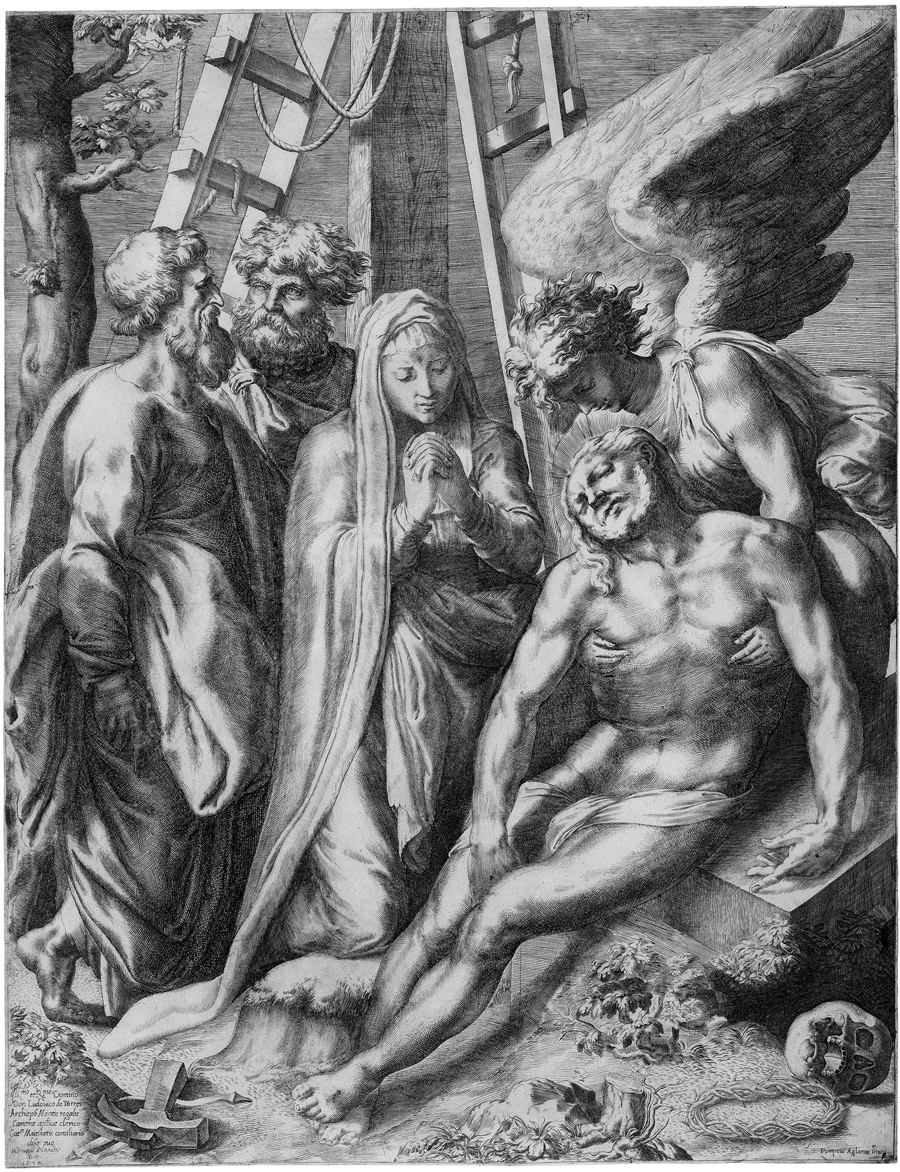Loading the page ...
Orazio de Santis
(called Aquilano, active between 1568–1584)
The Mourning of Christ. Engraving. 54.8 x 42.4 cm. 1574. Bartsch XVII, 10, 9; Nagler 9 I (of II). Watermark: Pilgrim in shield (cf. Woodward 9, Rome, c. 1545–1570).
The Mourning owes its effect to its compositional density and monumental format. Indeed, this and the Birth of Christ (Bartsch 3) are the two largest engravings that Orazio de Santis ever made. The artist’s not very extensive printed œuvre consists almost entirely of engravings after models by the possibly related painter and sculptor Pompeo Cesura, known as Aquilano, who was trained by Perino del Vaga and worked all his life in Rome. This is why de Santis, of whose life little is known, was nicknamed Aquilano. Active as a publisher and engraver, Orazio was probably also based in Rome, as is confirmed by his collaboration with Cherubino Alberti.
In stylistic terms de Santis is a typical representative of Roman Late Mannerism. His formal vocabulary is often very eclectic and draws on quite different sources of inspiration. The Mourning shows the strong influence which Giulio Bonasone exerted on the artist. The somewhat crude and apparently primitive engraving technique and the striking use of light are strongly reminiscent of the Bolognese master. However, closer inspection reveals that the spatial arrangement of the compact group of figures is not quite as harmonious as it might be, and the technical execution also betrays weaknesses. The dense hatching patterns fail to fuse together harmoniously, but clash awkwardly, as is clearly visible in the rendering of the terrain in the right foreground. Yet despite – or perhaps because of – these shortcomings the scene possesses an expressiveness and pathos all of its own.
A very fine contrasting and tonal impression with the borderline. This extremely rare print is available in an early state that has only been described by Nagler: Before the address of the publisher de’ Cavalieri and before the cancellation of the artist’s name. Some unobtrusive printer’s creases on the verso, otherwise – also in respect of the size of the sheet – in very good condition.
